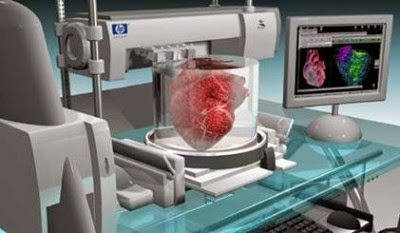The technology for creating new tissues from stem cells has taken a giant leap forward. Two tablespoons of blood are all that is needed to grow a brand new blood vessel in just seven days. This is shown in a new study from Sahlgrenska Acadedmy and Sahlgrenska University Hospital published in EBioMedicine.
Just three years ago, a patient at Sahlgrenska University Hospital received a blood vessel transplant grown from her own stem cells.
Just three years ago, a patient at Sahlgrenska University Hospital received a blood vessel transplant grown from her own stem cells.
Missing a vein
Professors Sumitran-Holgersson and Olausson have published a new study in EBioMedicine based on two other transplants that were performed in 2012 at Sahlgrenska University Hospital. The patients, two young children, had the same condition as in the first case – they were missing the vein that goes from the gastrointestinal tract to the liver.
"Once again we used the stem cells of the patients to grow a new blood vessel that would permit the two organs to collaborate properly," Professor Olausson says.
"Drilling in the bone marrow is very painful," she says. "It occurred to me that there must be a way to obtain the cells from the blood instead."
The fact that the patients were so young fueled her passion to look for a new approach. The method involved taking 25 milliliter (approximately 2 tablespoons) of blood, the minimum quantity needed to obtain enough stem cells.
"Once again we used the stem cells of the patients to grow a new blood vessel that would permit the two organs to collaborate properly," Professor Olausson says.
Stroke of genius
This time, however, Professor Sumitran-Holgersson, found a way to extract stem cells that did not necessitate taking them from the bone marrow."Drilling in the bone marrow is very painful," she says. "It occurred to me that there must be a way to obtain the cells from the blood instead."
The fact that the patients were so young fueled her passion to look for a new approach. The method involved taking 25 milliliter (approximately 2 tablespoons) of blood, the minimum quantity needed to obtain enough stem cells.
Blood willingly cooperates
Professor Sumitran-Holgersson's idea turned out to surpass her wildest expectations – the extraction procedure worked perfectly the very first time.
"Not only that, but the blood itself accelerated growth of the new vein," Professor Sumitran-Holgersson says. “The entire process took only a week, as opposed to a month in the first case. The blood contains substances that naturally promote growth."
"Not only that, but the blood itself accelerated growth of the new vein," Professor Sumitran-Holgersson says. “The entire process took only a week, as opposed to a month in the first case. The blood contains substances that naturally promote growth."
More groups of patients can benefit
Professors Olausson and Sumitran-Holgersson have treated three patients so far. Two of the three patients are still doing well and have veins that are functioning as they should. In the third case the child is under medical surveillance and the outcome is more uncertain.
They researchers have now reached the point that they can avoid taking painful blood marrow samples and complete the entire process in the matter of a week.
"We believe that this technological progress can lead to dissemination of the method for the benefit of additional groups of patients, such as those with varicose veins or myocardial infarction, who need new blood vessels," Professor Holgersson says. “Our dream is to be able to grow complete organs as a way of overcoming the current shortage from donors.”
source
http://goo.gl/tPCA43
They researchers have now reached the point that they can avoid taking painful blood marrow samples and complete the entire process in the matter of a week.
"We believe that this technological progress can lead to dissemination of the method for the benefit of additional groups of patients, such as those with varicose veins or myocardial infarction, who need new blood vessels," Professor Holgersson says. “Our dream is to be able to grow complete organs as a way of overcoming the current shortage from donors.”
source
http://goo.gl/tPCA43










